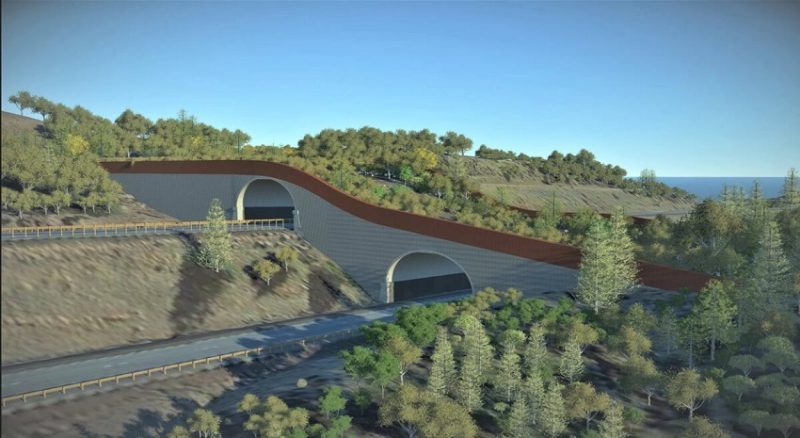Medford, Ore. – Southern Oregon University (SOU) is playing an integral role in the development of a new wildlife crossing that will be built through the Cascade-Siskiyou National Monument, just south of Ashland. The project, which is funded by federal resources, aims to improve wildlife movement across a busy stretch of the I-5 highway, specifically near the Siskiyou Summit.
The wildlife crossing, set to be completed between late 2028 and early 2029, is part of a broader initiative to mitigate the dangers wildlife face when attempting to cross highways in the region. SOU’s involvement has been key, with 14 undergraduate students from the university’s science department collaborating with the Bureau of Land Management (BLM) to monitor wildlife activity in the area.
Through the use of wildlife cameras placed along the interstate, the students are helping to gather data on the species that frequent the area, contributing to the research that will inform the design and functionality of the crossing. Karen Mager, an associate professor of science at SOU, has been overseeing the students’ work. Mager emphasizes that this wildlife bridge will be unique in several ways.
“The bridge will be designed with deep soil to support a variety of vegetation,” said Mager. “It will also have high walls that reduce noise and light exposure, creating a safer, more peaceful environment for the wildlife. On top of that, the exterior will be decorated with artwork, making it not just a functional structure, but a beautiful addition to the landscape as people enter Oregon on I-5.”
The Oregon Department of Transportation is managing the construction of the crossing, which will span the busy highway to allow animals such as deer, elk, and other local species to safely cross from one side to the other, reducing the risk of accidents involving wildlife.
Following the completion of the bridge, SOU will continue to monitor and collect data on its use, helping to assess its effectiveness in supporting wildlife movement and safety. This ongoing involvement will provide valuable insight into the success of the project and its long-term impact on the surrounding ecosystem.
As the project moves forward, both the university and the community look forward to the benefits it will bring to wildlife and the region as a whole. The Mariposa preserve wildlife crossing represents a significant step in ensuring the safety of local fauna while promoting a sustainable, wildlife-friendly infrastructure along one of Oregon’s busiest highways.

